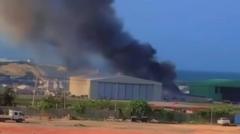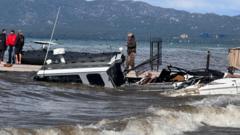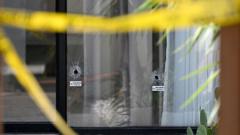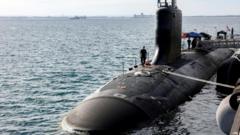The Australian Transport Safety Bureau's investigation highlights the impact of operational changes at Sea World that compromised safety protocols, resulting in a tragic mid-air collision and highlighting the importance of thorough change management in aviation safety.
Investigation Reveals Causes of Fatal Helicopter Collision in Australia
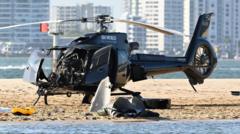
Investigation Reveals Causes of Fatal Helicopter Collision in Australia
A faulty radio antenna was identified as a contributing factor in a helicopter crash at an Australian theme park, resulting in four fatalities and numerous injuries.
A faulty radio antenna played a significant role in a mid-air helicopter collision at Sea World in Australia, leading to a tragic incident that claimed the lives of four individuals, including two British tourists. The collision occurred in January 2023 as one helicopter was taking off and another was landing near the popular Gold Coast theme park. An investigation by the Australian Transport and Safety Bureau (ATSB) revealed that a crucial radio communication was not received by one of the pilots, contributing to the fatal accident.
According to the ATSB report, the pilot of the departing helicopter was unaware of an incoming aircraft due to the faulty antenna, which prevented the reception of key radio calls that should have alerted him to the potential collision risk. The report also highlighted a pattern of operational changes implemented by Sea World that over time eroded risk management controls, creating dangerous situations for air traffic in the area.
The tragic event took the lives of Diane and Ron Hughes, a couple from Cheshire, England, as well as Australian resident Vanessa Tadros and Sea World helicopter pilot Ashley Jenkinson. The incident resulted in severe injuries to six others, while three additional passengers reported minor injuries. Following the crash, passengers on the helicopter that successfully landed praised their pilot for safely navigating the emergency.
The ATSB report underscored the need for operators and pilots to thoroughly evaluate any operational changes within aviation, given that even seemingly beneficial modifications can yield unintended and detrimental consequences. ATSB Chief Commissioner Angus Mitchell stressed the significance of managing operational alterations within a clearly defined safety framework to safeguard air traffic.
This devastating incident has raised awareness about the intricacies of aviation safety management and the critical importance of effective communication and infrastructure in preventing accidents in busy tourist areas.


